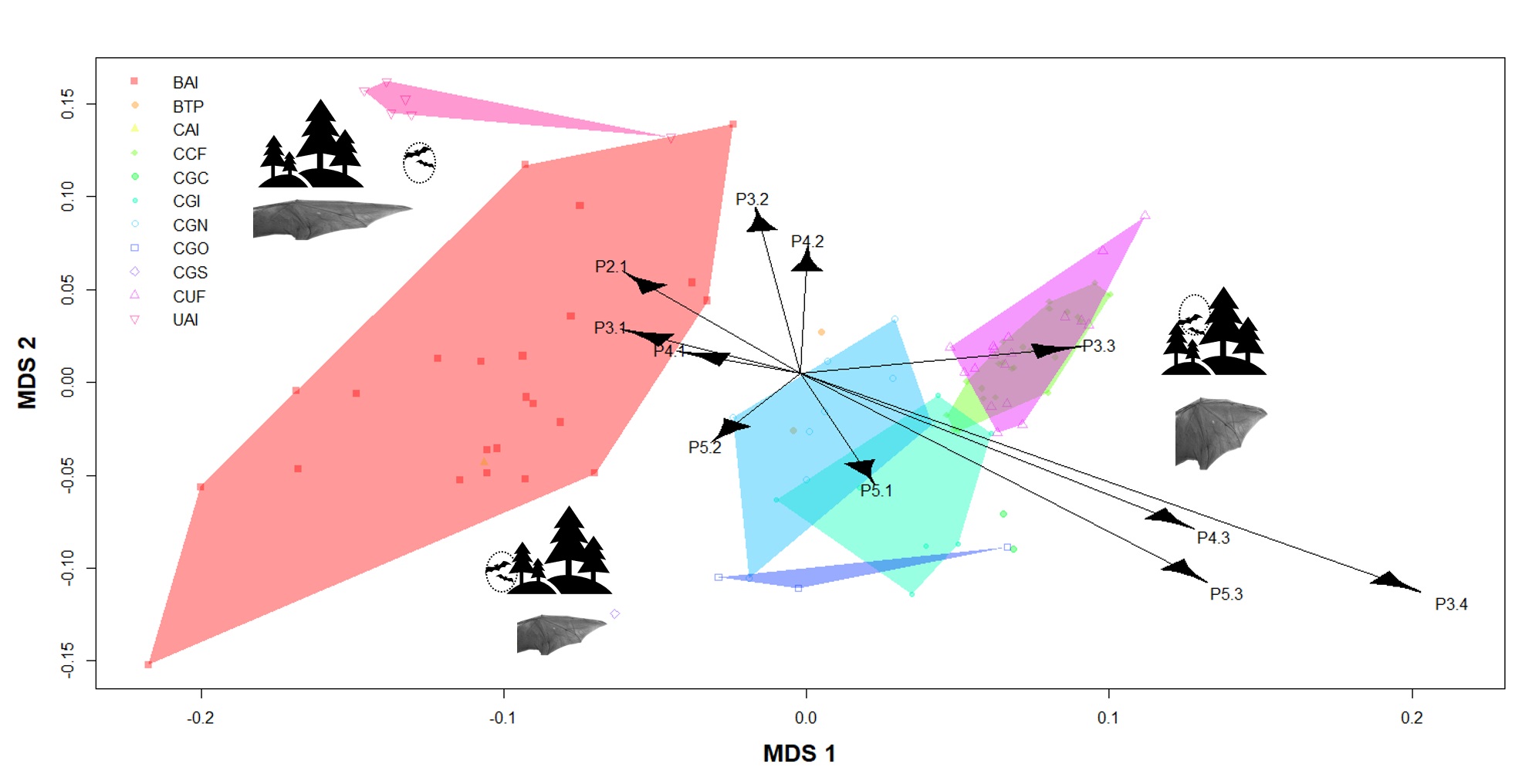Can Metacarpals and Phalanges Reflect
Habitat Use and Foraging Mode in New World Bats?
Importance of the article: Morphological diversity in bats has been
largely focused on wing shape by employing traditional measures (i.e.,
wing loading, aspect ratio, wingtip index). However, other approaches
based on individual bones and structures that support the wing such as
metacarpals and phalanges have been poorly investigated. This study
demonstrated that wing structure is a reliable indicator of habitat use
and foraging mode in Neotropical bats. Terminal phalanges represent key
traits for guild discrimination, but metacarpals were also important
for classifying some guilds, probably because of their potential role
in flight performance and ecological adaptations. Therefore, wing
traits as those evaluated in this study should be considered to better
understand the ecological interactions, foraging strategy, wing
adaptations, and flight performance in Neotropical bats.

Read the full article, published by Zoological
Studies, here
Follow Zoological Studies on
Twitter @ZooStudies
and Facebook
